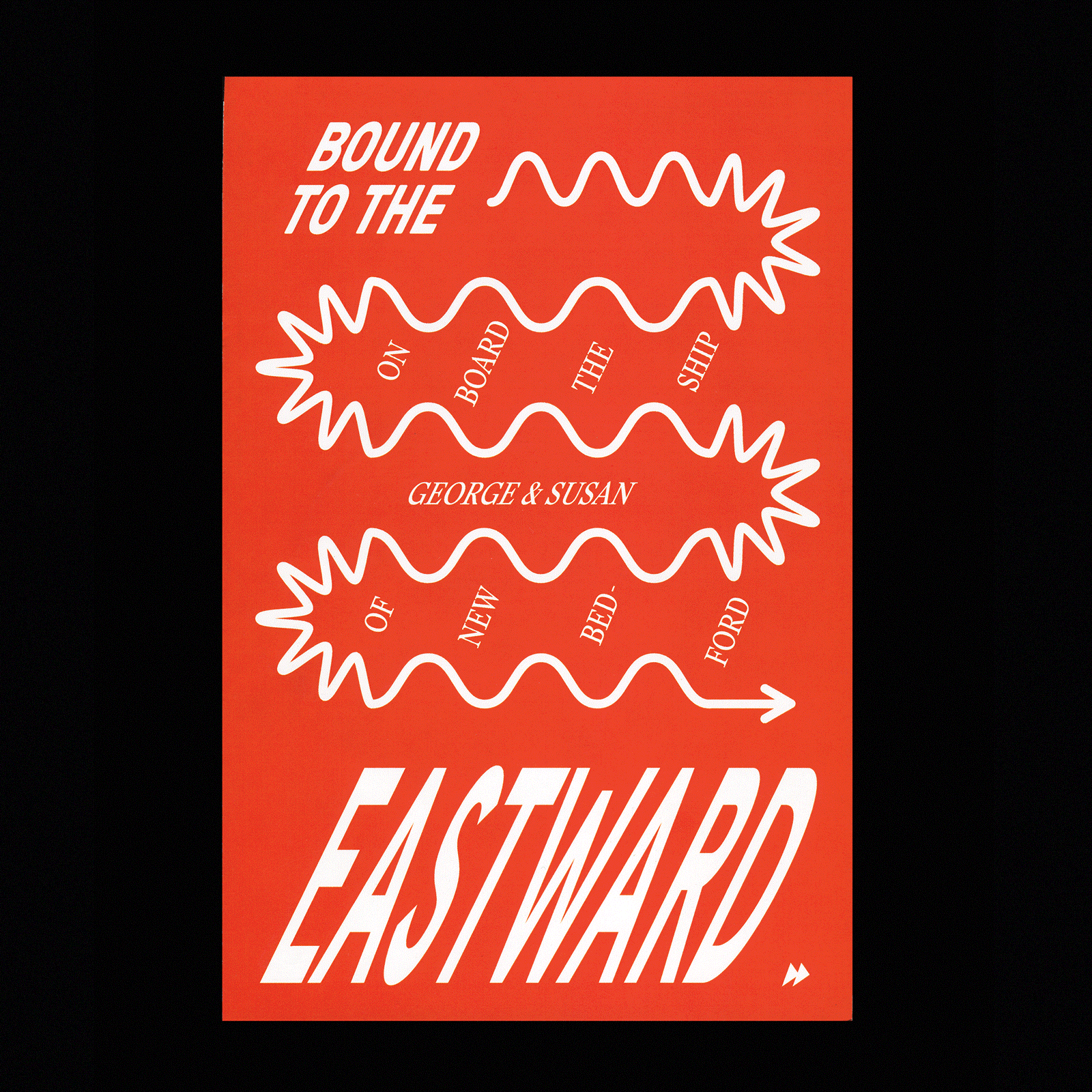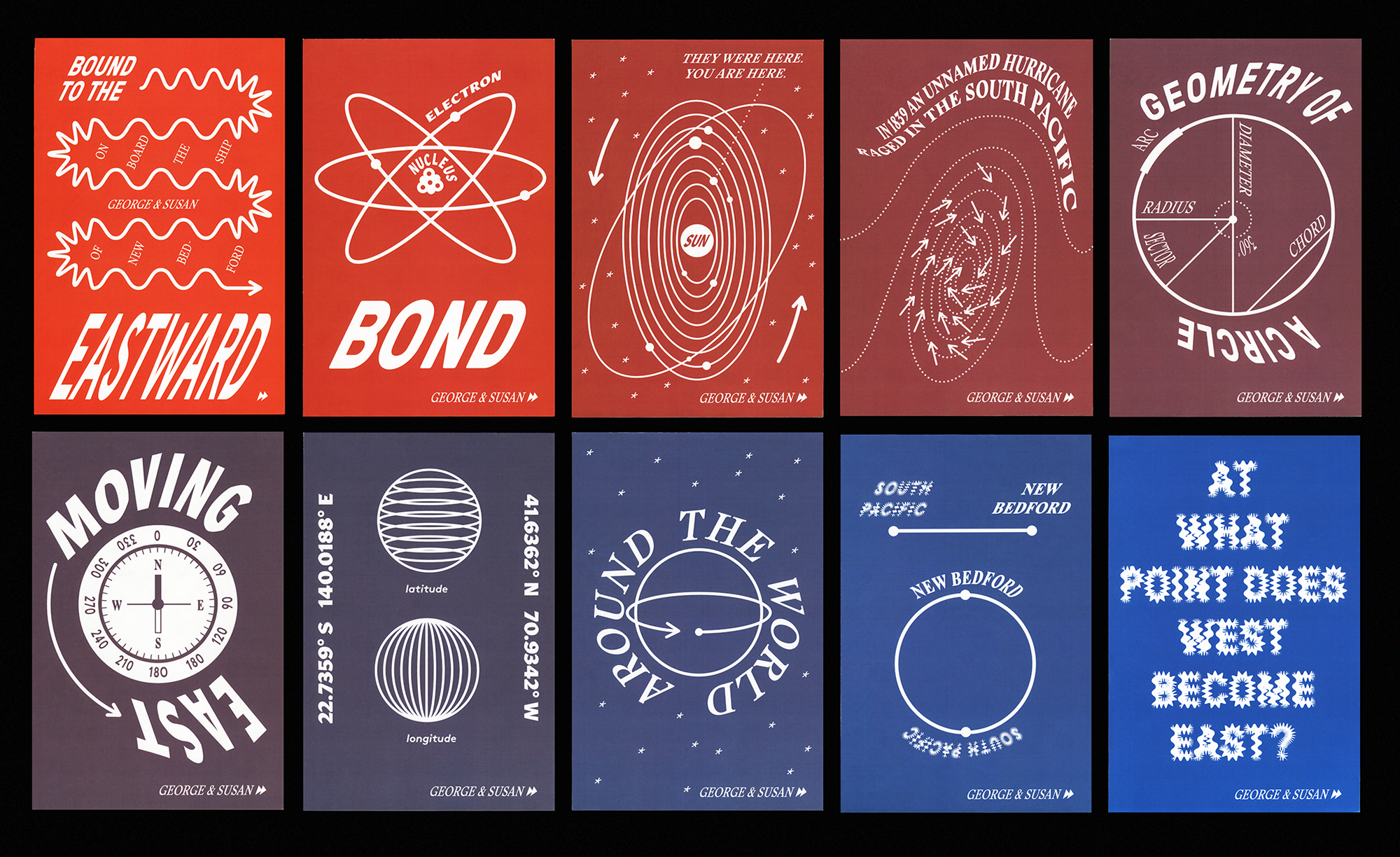Bound to the Eastward /
Cruising to the Westward

At the Providence Public Library, I found a whaler’s log kept by a sailor that documented two voyages. The first journey was from New Bedford, Massachusetts, to the South Pacific Ocean aboard the Marcella (1836–1838) and the second was a return voyage to New Bedford aboard the George & Susan (May 1833–1841). The journal was entirely handwritten; an elaborately drawn title on each page noted the location of the boat or in which direction it was heading. Inspired by these directionals and the circular motion of the trip, I decided to examine the whaler’s log using Aristotle’s Organon.1 I created ten plates, six inches wide by nine inches long, one for each classification, one for each of Aristotle’s classifications. The reader can either start at “Cruising to the Westward,” inspired by the Marcella voyage, or “Bound to the Eastward,” inspired by the trip taken by the George & Susan. The reader is guided by arrows and a gradient to follow the cards either left or right, depending on the direction of their chosen journey. The Marcella side of the cards examines ways in which time is circular, while the reverse—the George & Susan side of the cards—focuses on circular space. The distorted and playful typography on the cards is intended to reference, but not copy, the playful nature of the typography found in the original log.
[1] Aristotle’s Organon states that ’every object of human apprehension can be analyzed within ten categories: 1. substance 2. quantity 3. relation 4. quality 5. place 6. time 7. position 8. state 9. action 10. Affection

William B. Haskell’s journal aboard the whaling ships the Marcella the
George and Susan from May 26,1836–July 12,1841.
George and Susan from May 26,1836–July 12,1841.

